The bow of the boat cut through the warm waters of Australia’s Hervey Bay. The cool air, heavy with salt and early morning mist, lapped at my skin. Half an hour earlier I had stumbled sleepily from a Greyhound coach, thrown my backpack over my shoulder and walked towards the ocean. It was first light and the small Queensland town was not yet awake. The boat slowed to a drift and cut the engines. Now the only sound was the chime of water ringing on the hull as the calm seas became glittered topaz under the flare of the morning sun. The gentle sway of the boat was threatening to carry me into a deep sleep when the tranquility was abruptly shattered. The ocean’s skin was torn open as a monstrous Humpback Whale exploded its enormous bulk out of the water, before crashing down in a twisting foamy eruption.
I was awestruck by the sight of this leviathan in flight. I didn’t own a digital camera. My film camera clicked myopically in uneducated hands, without a hope of capturing the breathtaking experience. The adult Humpback is a mighty Being, growing to 18 meters (60 feet) and weighing in at an extraordinary 40 tons. If you attended school in North America that yellow bus you travelled on would have been a little smaller than a Humpback. No one knows why the Humpback does this full body breach. They are the only species of whale to do so. Perhaps they are just having fun, because they can. Perhaps they dream that their huge pectoral fins will one day take them circling into the sky like the other great ocean wanderer, the albatross.
The Humpback whale is a rare conservation success story. In 1988 this whale was still listed as an Endangered Species, with extinction seemingly inevitable. Then something remarkable happened. We got smart! Commercial hunting of Humpbacks was prohibited by the International Whaling Commission and the world’s population of these extraordinary animals has been steadily growing ever since. The Humpback is now listed as Least Concern.
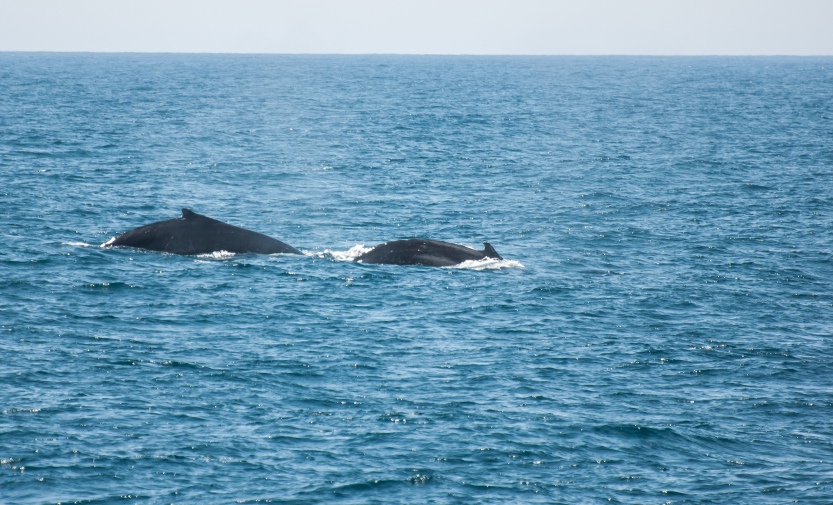
My next encounter came some years later in one of the great cities of the world; Sydney, Australia. For a few months of the year Sydney’s Pacific coastal waters become a superhighway for migrating Humpbacks. In the spring around 1200 Southern Humpback whales head north to their breeding grounds at the south end of the Great Barrier Reef. In the autumn mothers lead their rapidly growing calves on the unprecedented 5000 km (3000 miles) journey back south to the rich feeding grounds in the frigid waters of Antarctica.
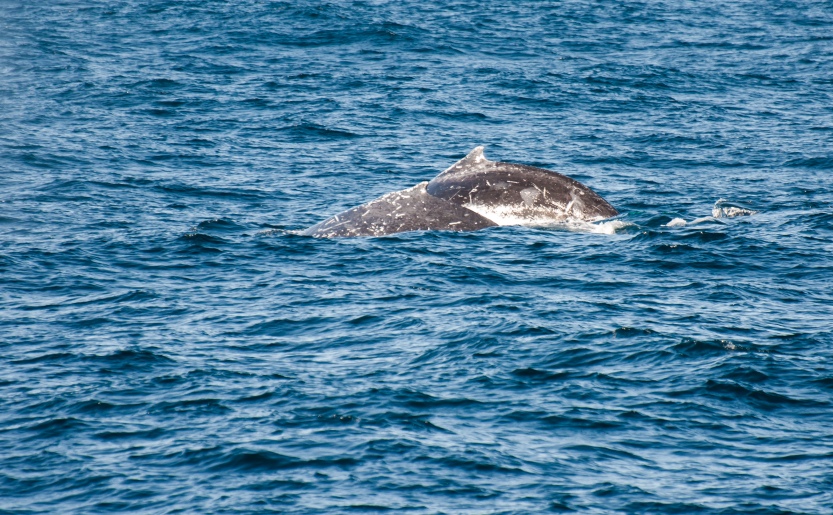
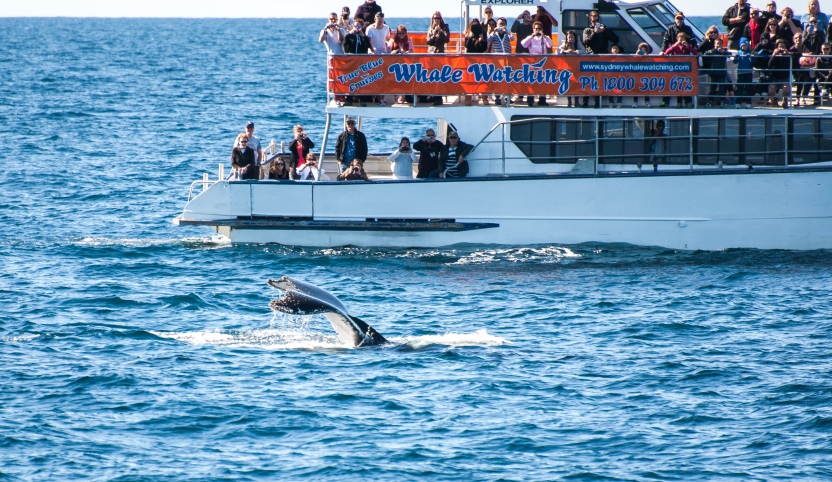
I would very much like to enjoy being with whales on a small boat, alone, rather than on a commercial whale watching vessel, but I know that is selfish of me. It is our desire to be with whales, and the industry that has mushroomed out of this desire that will surely guarantee these magnificent animals are protected for decades to come.
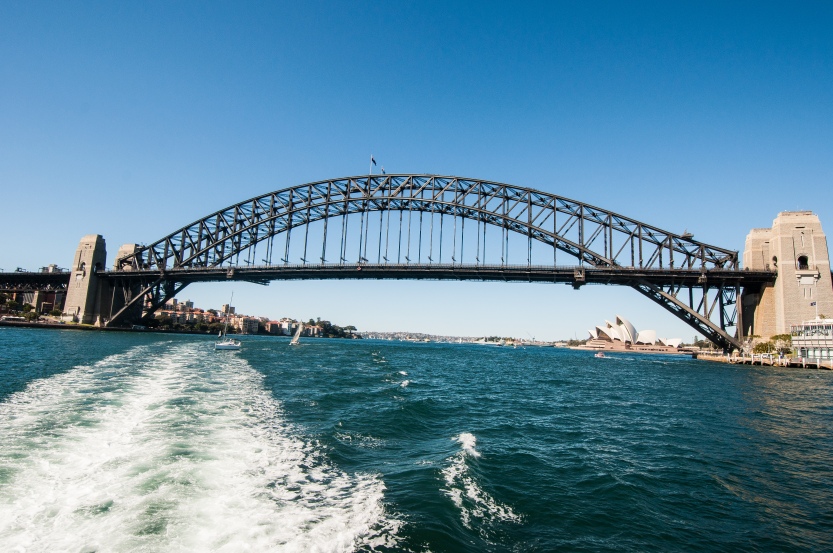
My most recent encounter with the magnificent Humpback came off the coast of Vancouver Island, in the astonishing Salish Sea and along the Great Bear Coast. I travelled on a small boat from Telegraph Cove, deep into the Great Bear Rainforest in search of Grizzly Bears. Here, in the early morning rain the surface of the sea was a stew of cetaceans. We stopped briefly to spend time with a Humpback. I was struck by how these massive animals feed so close to the rocky coast and navigate the narrows between the scattered islands. As the whale sank into the deep it presented first the leathery hump that gives it its name, followed by the iconic whale tail dive. The hump is not actually a physical hump but rather a body shape that the whale takes as it rolls into a dive.
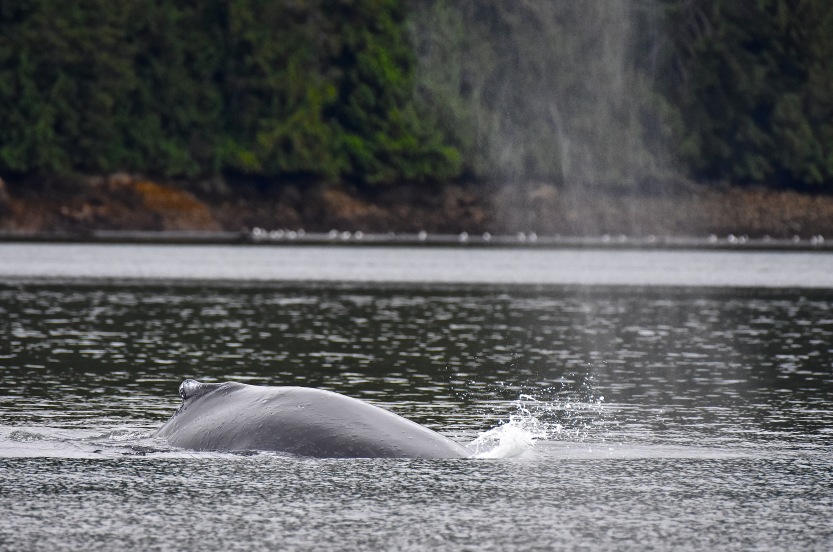
The following day I got to spend a little longer in the company of giants, this time in the spectacular Salish Sea. Like an ancient Douglas fir trunk, a huge whale back broke open the surface of the sea, rolling in the eddying current. Cracking like a gas cylinder, the whale exhaled, sending a fountain of mist high into the air. This is how to find whales. The sound is unmistakable and the distant plume of white “smoke” against the inky ocean can only be made by one thing.
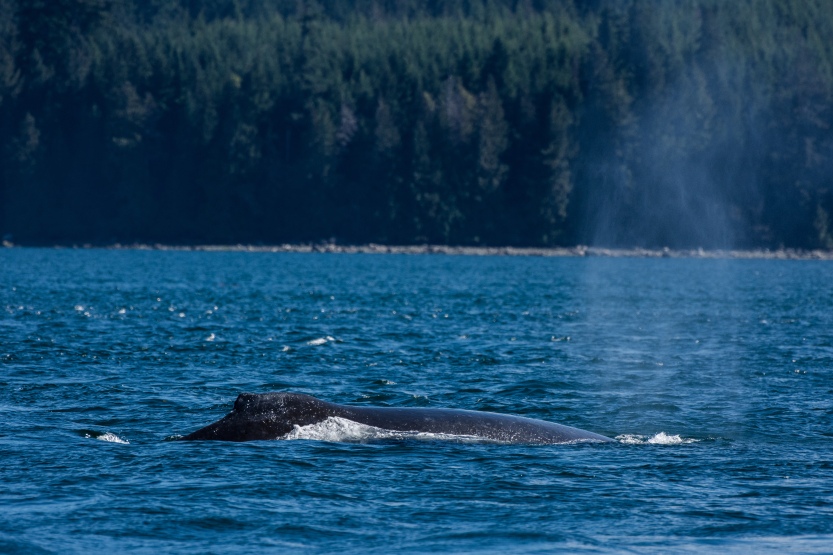

The Humpback whale has an extraordinary ability that only a privileged few get to experience. This is the whale song of the male humpback. It is said to be the most complex song of any creature on the planet. The discovery and subsequent unfolding of the complexity of this song was essential to humans building a relationship with a creature that could no longer be viewed as a dumb animal. It has helped to save the Humpbacks very existence. The song appears to be used to network between males. All whales in an area will sing the same song, but this song will evolve as a group over a period of time. The song was discovered in the 1970s during the Cold War when a Bermudan listening for Russian submarine activity stumbled on the unique, haunting sound. Sailors of yesteryear spoke of the haunting sound that vibrated through their wooden hulls. These encounters of song from an unknown source deep in the ocean gave rise to many a myth and legend.
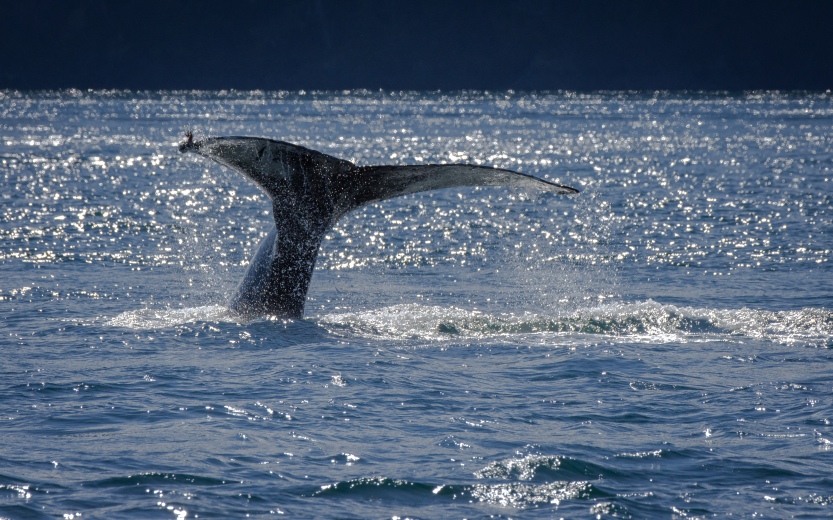
The Humpback is a global whale that swims in every ocean on the planet. No other mammal attempts the extraordinary 10,000 km (6,200 miles) odyssey of the Humpback migration.
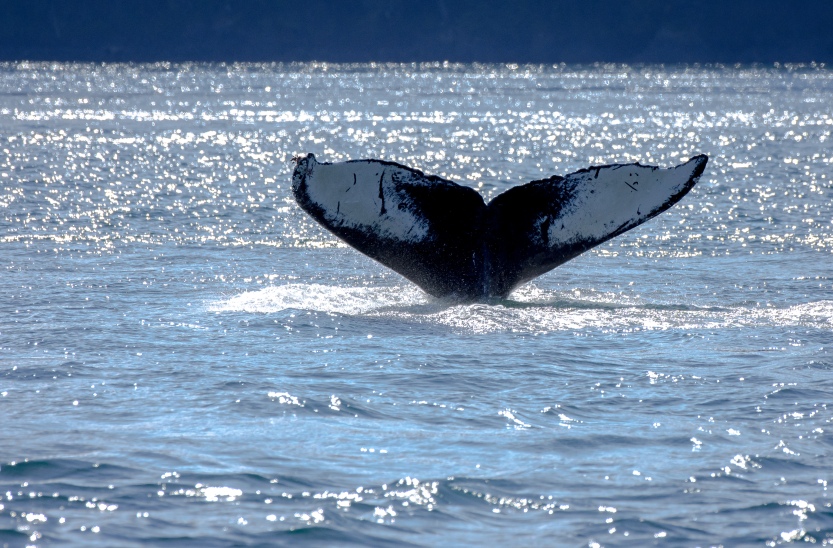
I have been blessed to see these mighty whales in the North and the South. I have watched them as they navigate some of the most beautiful coastal waters on the planet. I should be satisfied, but I have a gnawing urge. Someday I need to be in the water with these gentle giants to look them in the eye and perhaps, if it is my turn, to hear their siren song.
Join the conversation below. Have you been in the presence of whales? What did you experience?
Connect others with wildlife by sharing this post on social media and, If you enjoyed this post, please follow Incidental Naturalist.
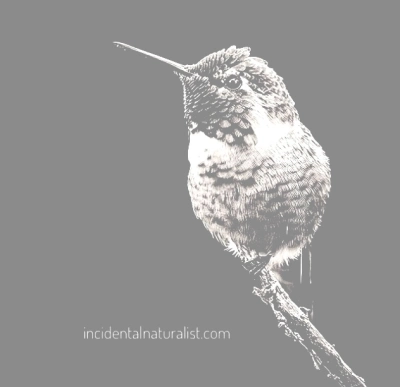


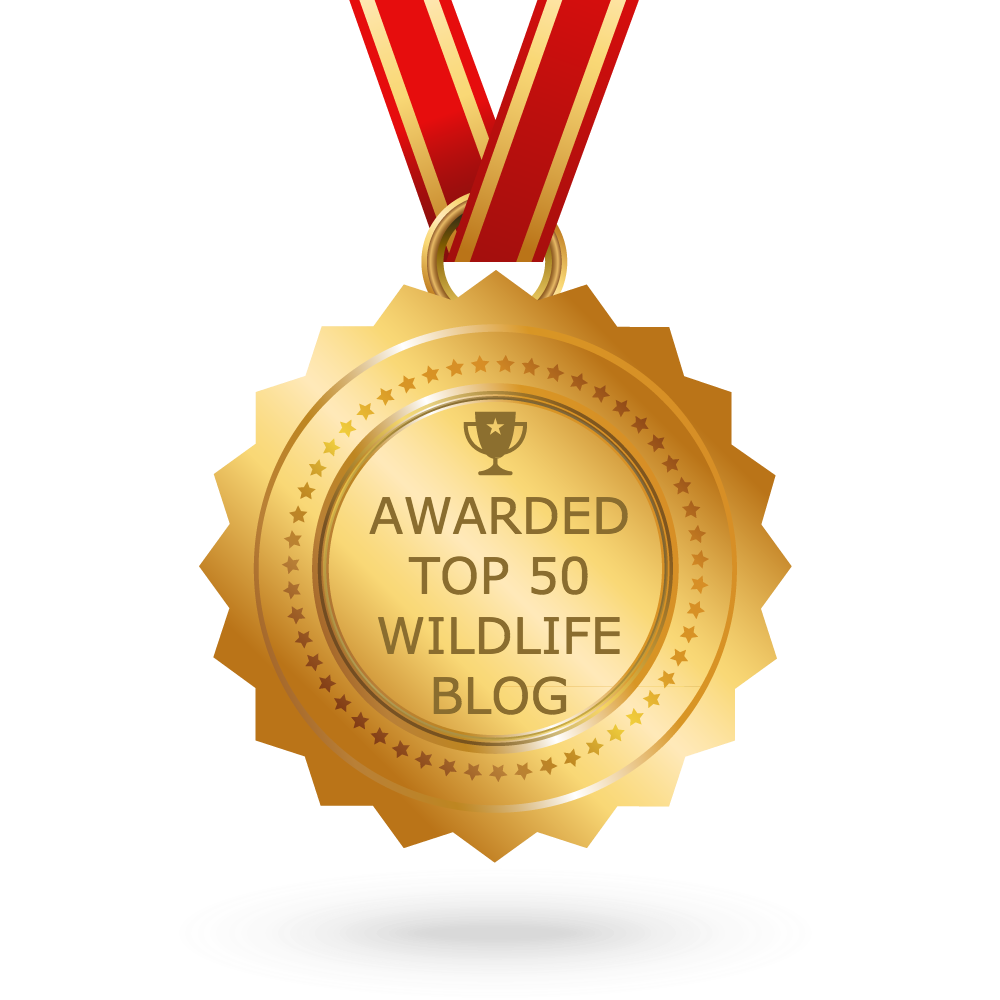

Whales are wonderful and you are able to catch some of the experience in your writing. I met a trio of humpbacks when I worked briefly as a relief lighthouse keeper on Addenbroke Island on the BC coast. This is about 60 minutes north of Vancouver Island by helicopter. This trio would circle the island as it fed. I’d be sitting knitting inside and suddenly hear their humph as they blew. I’d run out with my camera, and there they’d be, metres away, blowing and cavorting. Beautiful. Peaceful.
Tina was there with me. She’s taken lots of great video footage of the whales. https://youtu.be/TJp8N7mLMh4
LikeLiked by 3 people
Thanks for this wonderful comment. I have just Googled Addenbroke Island lighthouse and watched the amazing video of Humpbacks lunge feeding. What a special experience you must have had. A real privilege! 🙂
LikeLike
It seems I’ve seen more humpbacks than any other type of whale. It’s great that they’ve made such a strong come-back.
LikeLiked by 2 people
Great post, David. On a trip to Alaska, we watched Humpbacks group feeding, the whales were rising up in a circle to push the fish out of the water. It was incredible to watch this brilliant behavior. Last summer in San Francisco, a group of humpbacks came all the way into the bay which is very unusual and were feeding right under the Golden Gate Bridge. It was a spectacle and there were loads of people on the shore watching…including me. I am thankful that they’ve been brought back from near extinction.
LikeLiked by 2 people
Thank you, Jane! Wow, you had two amazing experiences. I would very much like to see them feeding. I’m sure there were some great photo opportunities under the Golden Gate Bridge. I saw some young ones in Monterey Bay as well as Grey whales and dolphins.
LikeLiked by 2 people
Once a whale shot up so close to our boat that all we could see was the expanse of its body covered in barnacles (?). I have been fortunate to have seen them numerous times around Australia. They come right into the harbour here (Sydney) so chance encounters are likely during their migration.
LikeLiked by 3 people
Hi Mary, thanks for commenting and sharing your experience. You can see in the whale tail photo from Vancouver Island that the tail has is bordered with a crust of barnacles. I took several trips out of Sydney harbour to watch them and even watched them from the cliffs at Vaucluse a few times.
LikeLiked by 1 person
Yes, I see; good shot.
LikeLiked by 1 person
Such a privilege to see. I have seen Orcas and a Pilot whale but I would love to see the big guys!
LikeLiked by 3 people
I’ve managed to see a few of the big guys now. The first was the Sperm whale. That feeling was really indescribable. I hope you get your chance 😊
LikeLike
I hope so.
LikeLiked by 1 person
Beautiful photos and beautiful writing!
LikeLiked by 2 people
Thank you! 🙏
LikeLike
I haven’t seen any humpbacks but living here in Alaska, I’ve seen orcas on several occasions (they happen to be my very favorite animal) cruising off-shore for pink salmon. Also, kayaking in Kachemak Bay, had a minke come check us out. Huge and makes you feel very small, lol. Of course, seen lots of porpoise, too.
LikeLiked by 2 people
Wow, what an extraordinary experience to have a whale check you out while kayaking. I also saw my first ever Orca on the same day that I saw the Vancouver Island Humpback. They are special creatures. Thanks for the comment! 🙏☺️
LikeLiked by 1 person
I think the paradox of feeling fulfilled yet unsatisfied when it comes to wildlife is a very relatable one. Your style certainly accentuates the emotional impact of sharing the water (even if from a commercialised whale watching boat) with such magnificent beasts. I’ve also had the sublime encounter of a the humpbacks off telegraph cove, where we were very lucky to witness the legendary full breach. Very unforgettable!
LikeLiked by 2 people
Thanks so much for the kind comment. 🙏 I’ve had a few whale encounters over the years but the Telegraph Cove one was special because I wasn’t on a commercial whale vessel and wasn’t looking for whales.
LikeLike
How exciting! Must have been some moment if you’re weren’t expecting it!
LikeLiked by 1 person
I went to see blue whales off the coast of southern Sri Lanka. Being anything but familiar with sea, and being that a windy, drizzly, choppy seas day I was most concerned with not soiling myself, but the sight of those gigantic animals filled me with awe and utmost respect. I’d like to go see more of these splendid animals, and I read this blog of yours with great pleasure! Now on to Youtube to listen some whales singing.
LikeLiked by 2 people
Thank you so much! 🙏 I hear you about those rough, choppy days seas. Amazing to see Blue whales isn’t it? I saw them in Sri Lanka, too. If you’re interested you can find my blog post about them. You’ll need to scroll back or search it. Did you go out from Mirrissa?
LikeLiked by 1 person
Yeah, out of Mirissa harbour!
LikeLiked by 1 person
To see a whale breach is a sight never forgotten. They are beautiful creatures! Great post!
LikeLiked by 2 people
That is absolutely spot on! Thank you for the kind comment 🙏
LikeLiked by 1 person
Lovely writing, David! You make the whole experience that much more beautiful from your descriptions “)) Thank you!
LikeLiked by 2 people
Thank you, Lara! 🙏 as always you are too kind 😊
LikeLiked by 1 person
lovely creatures
LikeLiked by 2 people
Beautiful. I was in Puerto Vallarta, Mexico in late January and went on a whale-watching cruise. It was beyond unreal. One came up to the boat and while it didn’t pop out to look at us, it did raise up enough so that we could see it’s back just a very few feet from the boat. I’ve always loved looking at photographs from others’ trip, but to be there and see them in real life, hear then when they surface, and marvel and the slow elegant grace as they swim by was a real gift. Great photos and luck you for have the adventure!
LikeLiked by 2 people
Great comment, thanks! Clearly you had a moving experience. Was it a Humpback or Gray whale? I believe both are in that area. It is amazing how graceful such an immense creature can be.
LikeLiked by 1 person
These were humpbacks and we saw several with calves too. The whole thing was amazing. We saw dolphins too, of course. All amazingly beautiful to see up close and in real life.
LikeLiked by 1 person
What a fantastic experience, Stuart! Thanks for sharing it with us. 🙏
LikeLiked by 1 person
Beautiful post…. surely an amazing experience… I had the great chance to see them in South Africa during mating season… they came so close to the coast we could see them from shore…
LikeLiked by 2 people
Thank you! 🙏 wow, what a fantastic experience to see them from shore during the mating season. It is extraordinary how we have all experienced these amazing creatures in different ways depending on where we saw them. Breeding, feeding, migrating, rearing young. Thanks for adding to the picture! 😊
LikeLiked by 1 person
Terrific – thank you.
LikeLiked by 2 people
Great post, very informative. I share that desire to swim with whales someday!
I saw several humpback whales moving northwards at various points off the Queensland coast too. Were were able to catch amazing close views of them and it was really special!
LikeLiked by 1 person
Thank you for the kind words. How awesome would it be to swim with these guys. I know that is an over used word but in this case it fits. If you find yourself in California I can highly recommend Monterey Bay for marine wildlife.
LikeLike
You definitely take great pics for uneducated hands. These are amazing! And great write up! I wish I could get way better upclose pics. My blog post is even embarrassing right now. But good one!
LikeLiked by 1 person
Thank you! 🙏 Your whale post is very good! If you want to take better photos then check-out some online tutorials on YouTube and start practicing. You will get to where you want to be. 😊
LikeLiked by 1 person
Thank you so much. Bless!
LikeLiked by 1 person